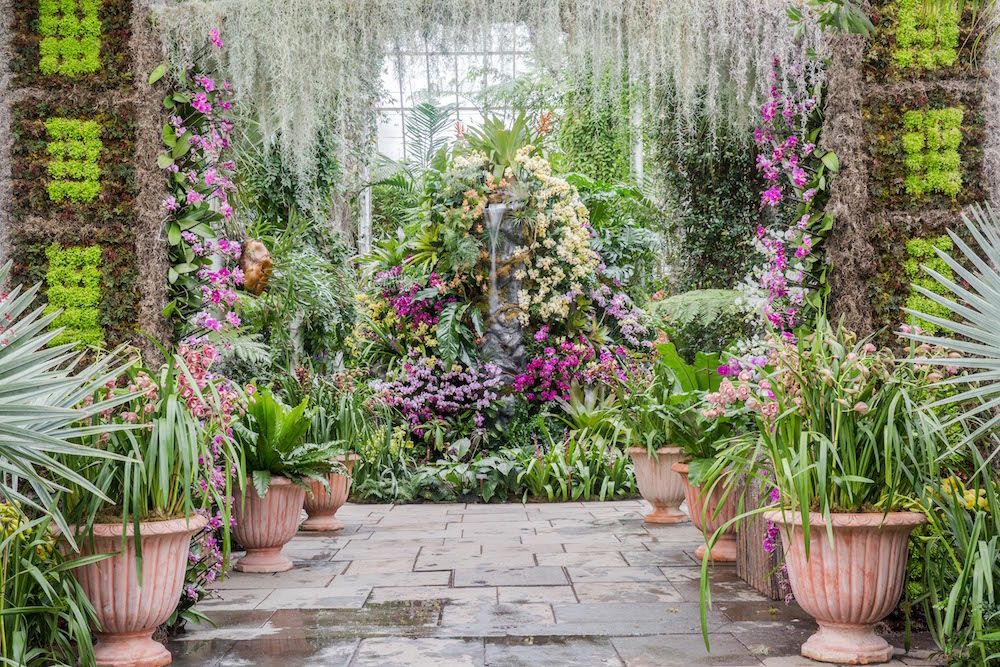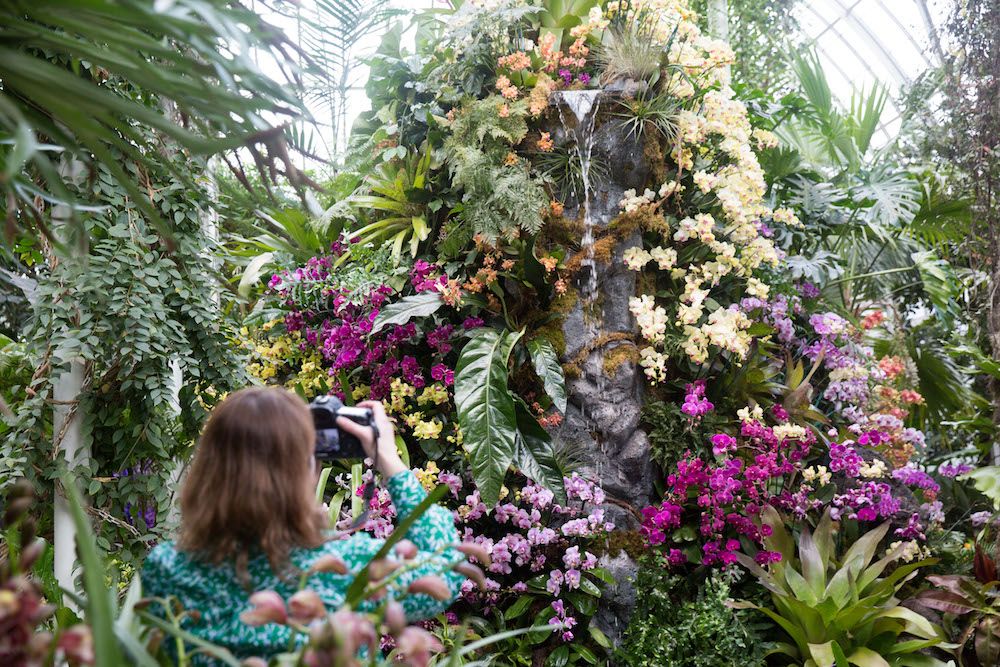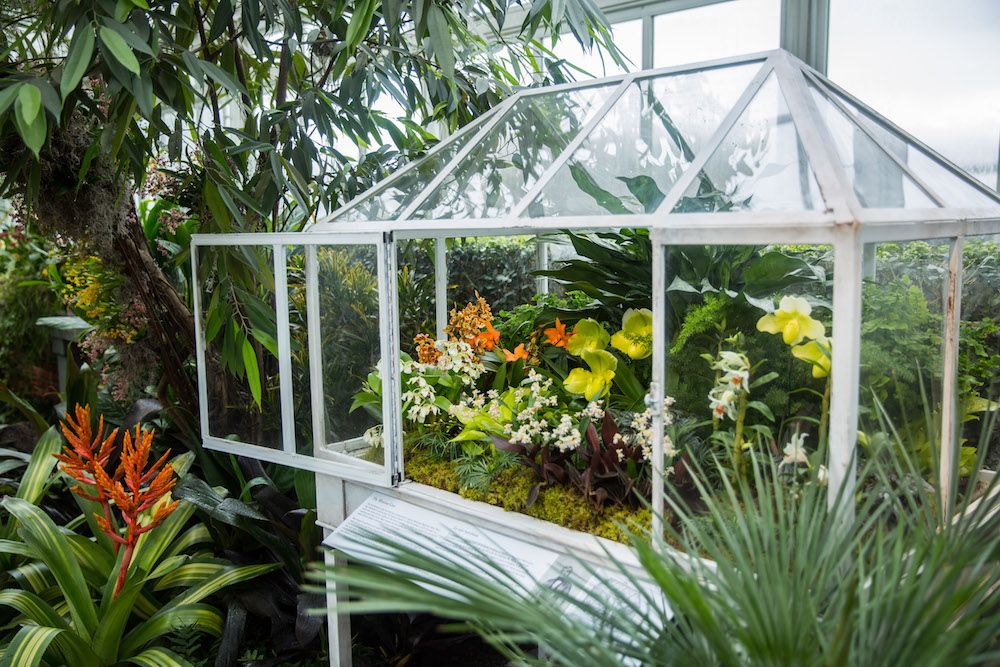A Show of Over 6,000 Orchids Celebrates a Victorian-Era Obsession
Succumb to “Orchidelirium” at The New York Botanical Garden
Being mauled by a jaguar or robbed at knifepoint might seem like risks fit for only the bravest of world travelers (or Indiana Jones). But those were just two of the many hazards that came with orchid hunting—a 19th-century obsession so compelling, people risked life and limb to find the perfect specimen.
During the Victorian era, orchid collecting was such a popular pastime among the elite that many collectors sent their personal orchid hunters to the farthest reaches of Earth to bring back the colorful flowers. Having the most unique specimens was considered a badge of honor akin to garnering a mind-blowing amount of likes on Facebook or Instagram today. Thus, “orchidelirium” was born—and as tribute to those flower-obsessed travelers, the New York Botanical Garden has chosen the phenomenon as the focus of its 14th-annual orchid show.
“The Orchid Show: Orchidelirium” is on display now through April 17 in New York. It's being held in the botanical garden’s Enid A. Haupt Conservatory, a sprawling glass greenhouse built around the same time that orchidelirium escalated and made its way to the United States. All told, the display includes an estimated 6,000 orchids, says Marc Hachadourian, curator of the garden’s orchid collection and manager of the Nolen Greenhouses, where the NYBG stores many of its holdings. One of show's highlights is the conservatory’s towering waterfall, which is flanked by a tapestry of thousands of brightly colored flowers. Visitors can also see a 19th-century propagation display and an example of a Wardian Case, a portable greenhouse invented by a London doctor named Nathaniel Bagshaw Ward that became a flower fad in its own right.
“We work with a network of nurseries and orchid breeders from around the country [to curate our annual display],” Hachadourian tells Smithsonian.com. “We try to have the newest and most interesting specimens on view, and use many from our own collection.”
Although now it may seem crazy to think that people once risked so much for orchids, the obsession was once common. Throughout the 19th century, orchid collectors competed for the best find, published tomes about their pursuits and built elaborate greenhouses to showcase the prized blooms.
Inside the conservatory, the NYBG's display would make any Victorian collector drool. Visitors can glimpse a variety of orchids, from the speckled Lady’s Slipper to the bright yellow Dancing Ladies and the star-shaped Darwin orchid from Madagascar. The famous naturalist Charles Darwin, after whom the flower was named, was an orchid fanatic in his own right who once said, “I never was more interested in any subject in my life than this of orchids.” He was so infatuated with the flowers that he even published a book on them and studied the relationship between the flowers and their pollinators. In 1862, he predicted that the only way a tube-shaped Madagascar orchid could be pollinated was for an insect to have a feeding tube long enough to reach the flower’s base. Forty years later, scientists confirmed this notion and discovered a moth with a tube that reached about one foot in length.
Another famous orchid fan and a major focus of the exhibition was Benedikt Roezl, who supposedly discovered 800 species during his travels in South and Central America. According to the botanical garden, an injury caused him to lose one of his hands. Undeterred, he replaced the missing limb with an iron hook and continued as an orchid hunter. He claimed that he was robbed at knifepoint no fewer than 17 times and even fought off a rabid jaguar in the jungles. But climbing the Mexican volcano Colima really set Roezl apart from other orchid hunters: Despite an eruption, he collected thousands of plants during his expedition and lived to tell the tale.
“He was truly relentless in his pursuit of orchids,” Hachadourian says. “Many people saw these plants as living souvenirs that connected them back to their travels. [Orchidelirium was so common] that people would often fight over plants at auction, paying the modern equivalent of thousands of dollars for a single plant.” Stakes were high for orchid lovers: If they didn't win the auction, Hachadourian adds, they had to wait up to a decade for a specimen to grow large enough to divide.
Orchidelirium might seem like something from the past, but advancements in propagation have only helped to fuel interest, with new specimens constantly being cultivated and sold at local nurseries. Orchids recently surpassed poinsettias as the most popular potted flower in the United States, and last year an Emperor orchid sold at auction for $100,000.
“Orchids have never truly fallen out of popularity,” he says. “The orchid has always been seen as something exotic, expensive and prized.”

/https://tf-cmsv2-smithsonianmag-media.s3.amazonaws.com/filer/52/d3/52d3e87d-1c63-461f-9658-50c81c5ced30/orchidmountainwaterfall-tosorchidelirium2016-mco-4001.jpg)

/https://tf-cmsv2-smithsonianmag-media.s3.amazonaws.com/filer/82/aa/82aa997b-1b17-408b-8b67-a8ab6f7af04f/propogationdisplayofcuriousities-tosorchidelirium2016-marlonco.jpg)


/https://tf-cmsv2-smithsonianmag-media.s3.amazonaws.com/filer/ac/ca/acca1f46-8cd8-440c-a333-37d808c2a16f/nybg_tos2013_doritaenopsis_photo_by_ivo_m_vermeulen.jpg)
/https://tf-cmsv2-smithsonianmag-media.s3.amazonaws.com/filer/76/b0/76b093e8-69ab-4fbb-b810-4370fa5f1319/nybg_tos2013_phaius_photo_by_ivo_m_vermeulen.jpg)
/https://tf-cmsv2-smithsonianmag-media.s3.amazonaws.com/filer/95/cb/95cbdb3d-d78e-4547-9c4b-49a4a3bfb484/nybg_tos2013_phalaenopsis_photo_by_ivo_m_vermeulen.jpg)
/https://tf-cmsv2-smithsonianmag-media.s3.amazonaws.com/filer/5f/a5/5fa5a4fb-0d5a-4e2b-aca8-cc0e3e430b0d/vandatokyoblueindigo01-mw.jpg)
/https://tf-cmsv2-smithsonianmag-media.s3.amazonaws.com/filer/5b/a0/5ba0bf2c-8843-41f0-9cc0-c77cd36841e1/nybg_tos2013_slipper_orchid_photo_by_ivo_m_vermeulen.jpg)

